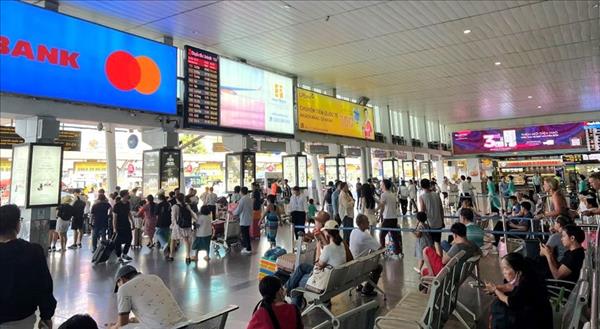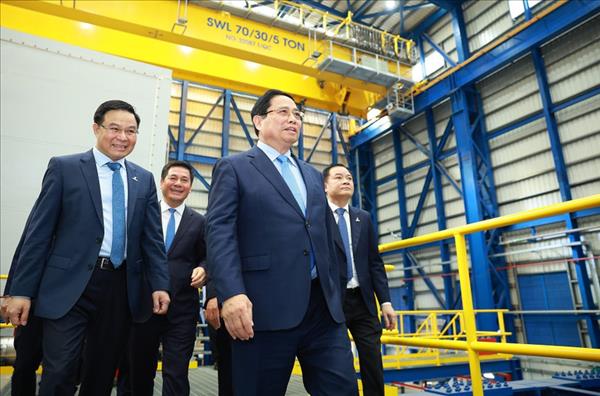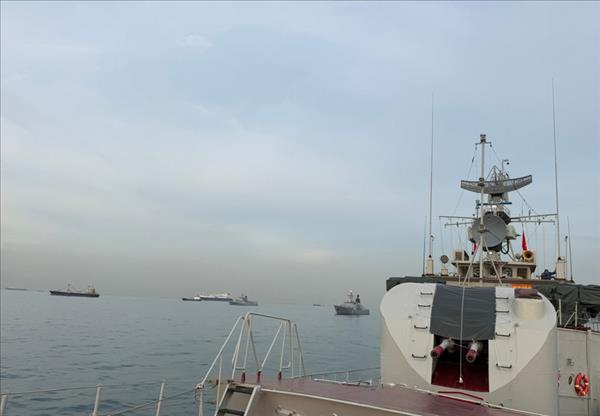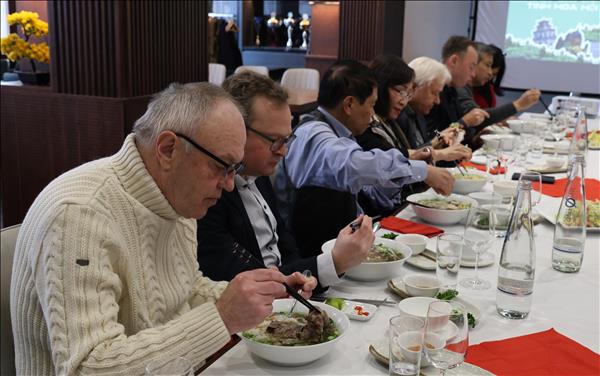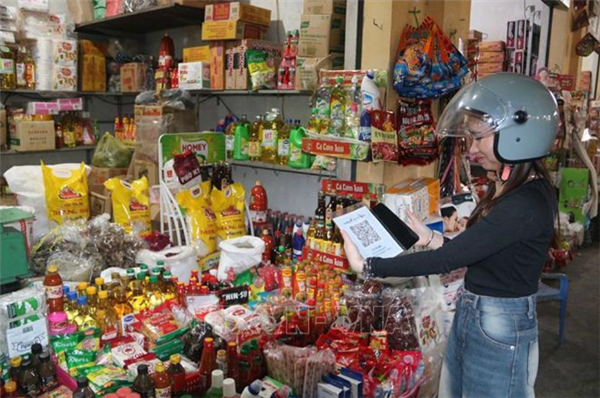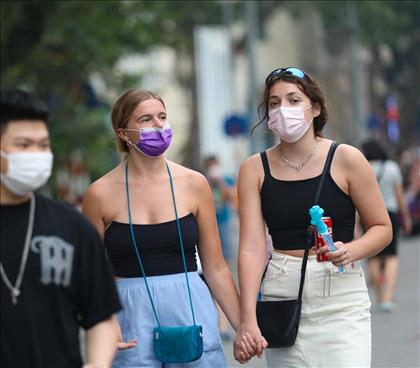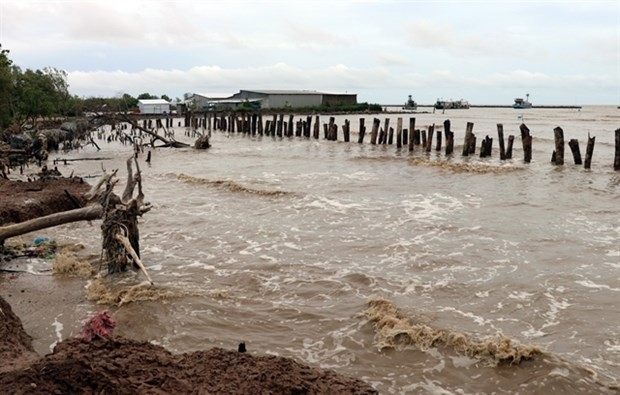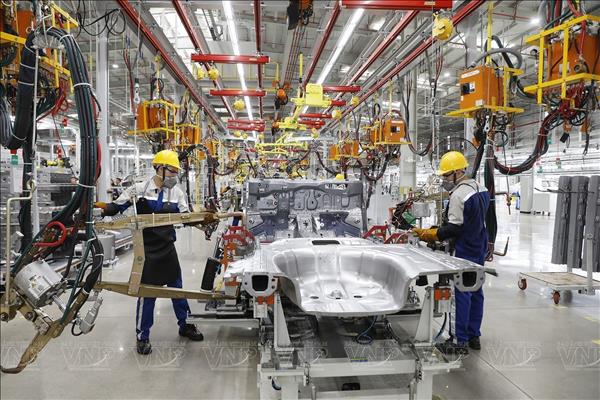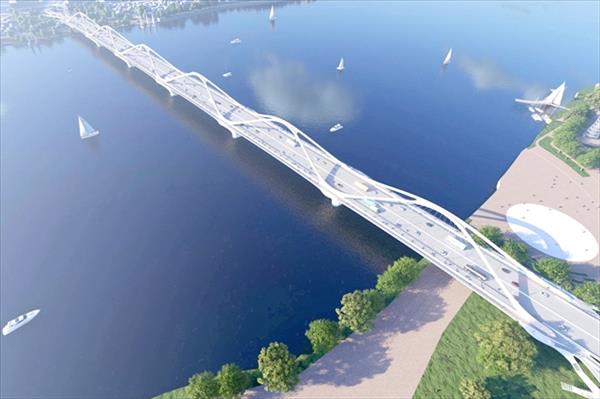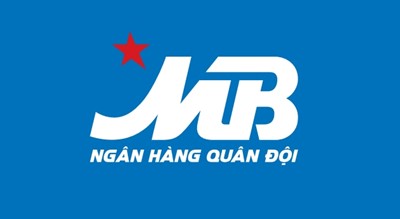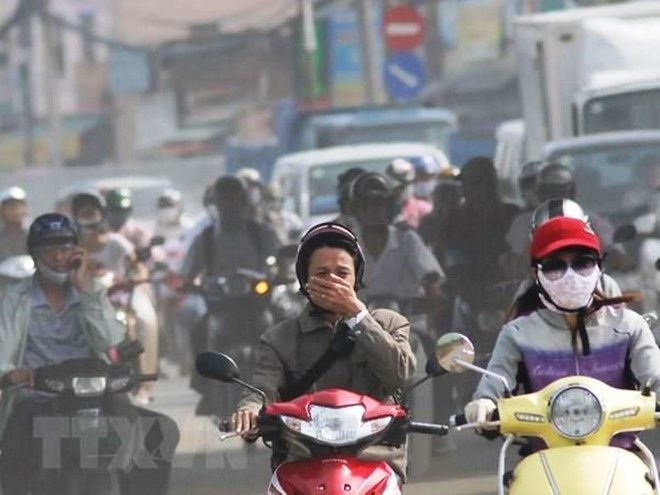 In the first quarter of 2019, the content of the particulate matter PM2.5 in the air of Hanoi exceeded allowed standards in several days in January, February and March. Photo: VNA |
Air pollution in Hanoi is real but there is no basis to say it is at the second highest level in Southeast Asia, Deputy Minister of Natural Resources and Environment Vo Tuan Nhan claimed at a Government press conference in Hanoi on April 2.
He made the statement in response to reporters’ queries about the information that Hanoi is the second most polluted city behind Jakarta, Indonesia, which raised public concern.
He said in the first quarter of 2019, the content of the particulate matter PM2.5 (tiny dust particles that are about 30 times smaller than a human hair) in the air of Hanoi exceeded allowed standards in several days in January, February and March, according to the monitoring results of the Vietnam Environment Administration and 10 automatic air monitoring stations of the Hanoi Department of Natural Resources and Environment, along with reference to monitoring data from the US Embassy in Vietnam.
This is mainly due to heavy traffic density, construction works, production from plants and garbage burning, he said.
The claim that Hanoi has the second highest level of air pollution in Southeast Asia came from a report on global air quality of the Green Innovation and Development Centre (GreenID), but it is inaccurate because in the statistics table, there is only data from 20 cities in four out of the 11 Southeast Asian countries. Therefore, there are no grounds for such a conclusion, Nhan stressed.
He said Hanoi is pushing ahead with the construction of an additional 80 air monitoring stations to measure pollution across the city in specific periods.
The Ministry of Natural Resources and Environment has worked with local authorities to move polluting facilities out of the city, he said.
Prime Minister Nguyen Xuan Phuc has issued a decision on emission standards for cars to minimise the level of emissions of vehicles, he added.
As for environmental issues in landfills, Nhan said the ministry has supervised the status of waste dumps across the country, focusing on waste discharged from people’s daily activities.
There will be two workshops on solid waste management in April and a national conference to deal with this matter in June this year.
He made the statement in response to reporters’ queries about the information that Hanoi is the second most polluted city behind Jakarta, Indonesia, which raised public concern.
He said in the first quarter of 2019, the content of the particulate matter PM2.5 (tiny dust particles that are about 30 times smaller than a human hair) in the air of Hanoi exceeded allowed standards in several days in January, February and March, according to the monitoring results of the Vietnam Environment Administration and 10 automatic air monitoring stations of the Hanoi Department of Natural Resources and Environment, along with reference to monitoring data from the US Embassy in Vietnam.
This is mainly due to heavy traffic density, construction works, production from plants and garbage burning, he said.
The claim that Hanoi has the second highest level of air pollution in Southeast Asia came from a report on global air quality of the Green Innovation and Development Centre (GreenID), but it is inaccurate because in the statistics table, there is only data from 20 cities in four out of the 11 Southeast Asian countries. Therefore, there are no grounds for such a conclusion, Nhan stressed.
He said Hanoi is pushing ahead with the construction of an additional 80 air monitoring stations to measure pollution across the city in specific periods.
The Ministry of Natural Resources and Environment has worked with local authorities to move polluting facilities out of the city, he said.
Prime Minister Nguyen Xuan Phuc has issued a decision on emission standards for cars to minimise the level of emissions of vehicles, he added.
As for environmental issues in landfills, Nhan said the ministry has supervised the status of waste dumps across the country, focusing on waste discharged from people’s daily activities.
There will be two workshops on solid waste management in April and a national conference to deal with this matter in June this year.
VNA/VNP

